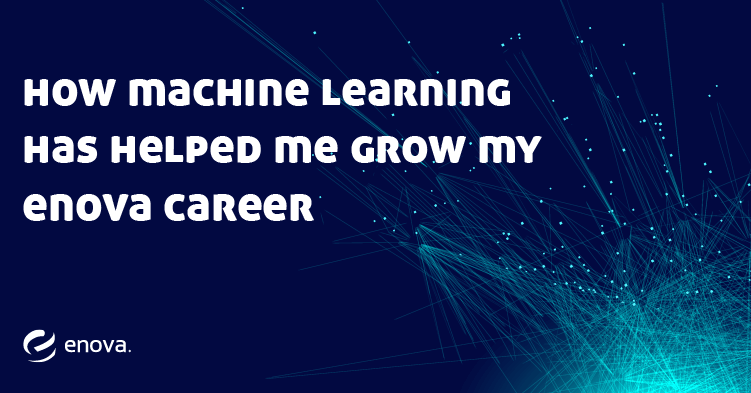How Machine Learning Has Helped Me Grow my Enova Career

By Emily Hammel, Data Scientist
Artificial intelligence. Machine Learning. Deep Learning. Big Data. All buzzwords heard throughout technology companies. But what do all these words really mean in practice?
Machine learning is a subsegment of Artificial Intelligence (AI) alongside deep learning, neural networks and some others. Machine learning refers to statistical model building and is the area I focus on here at Enova. Linear and logistic regression, decision trees, gradient boosting and random forests are all methods used to make predictions of what to expect in the future based on what can be learned from past data. So how can all these skills truly help an analytics-driven organization such as Enova?
As a Data Scientist on the Small Business Analytics team, that’s where my job comes in.
How does Enova and the Small Business team use Machine Learning?
The Analytics department at Enova utilizes the computational statistics area of machine learning to optimize loan decisioning and customer experience through statistical models. By taking into account credit data, bank statements and other relevant information provided by the customers, the models are able to determine a customer’s profile and fit them with the best offer for their business.
The key to any machine learning algorithm is the ability to evolve as new information becomes available and as we test new variables. Our team utilizes this new information to refit models with an enhanced training set to combat model degradation over time.
Beyond the skills needed to build the analytical models themselves, understanding the complex decision making behind the statistical models mimics the intricacies of small business lending. Every business that applies for a loan through Headway Capital, OnDeck Capital, or The Business Backer has certain important characteristics to determine the best product choice. Business strategies must align with model scores to optimize human underwriting time and the best fit for the customer.
One of Enova’s key values is “Best Answer Wins.” We believe innovative ideas and solutions can come from anywhere and anyone. This is never more apparent than with machine learning models. I will often test multiple types of algorithms side by side to test for the optimal performance. The data-driven answer determines the model that gets put into production.
What does the model building process look like?
The first step to creating any machine learning model is to start with data from which the algorithm can learn. Enova has databases which store our application and customer performance data. By combining this information in our database with external data from data vendors, we’re able to create an enriched dataset to train our models.
Once data has been collected and combined, we can start working on the model itself. The Analytics team at Enova is unique in that all data scientists are encouraged to use the programming tools of their choosing. The Analytics System and Platforms team creates in-house resources to make the model building and implementation process easier. For me, the model building step is the “fun part” where my team and I get the chance to try out new algorithms and test ideas with the hopes of out-performing current models. The results are then presented to the rest of the analytics department and key stakeholders from the business. A plan of action is finalized to start testing the new model in a live environment.
Once a machine learning model is in production, constant monitoring is done to assure the model is correctly evaluating customers. Checks are conducted on variable quality and model scores to assure consistency from the training dataset. Model results are broken down into groups based on model scores and these groups are evaluated based on the expected level of risk and customer performance. I work alongside our Strategy & Operations and Business Intelligence teams to create reporting that tracks in real-time the impact and allows teams to quickly adjust model thresholds and strategies based on performance.
How has understanding Machine Learning helped me take ownership of my career at Enova?
The knowledge of machine learning has allowed me to not only fulfill the analytics function of my role as a data scientist at Enova, but also to learn and grow my technical acumen. The technical skills required to build models in R and Python gave me the basic understanding of coding principles, which have helped me to adapt to Enova and Analytics related technologies such as the Cypher language used to implement these models in Enova’s Open Decisions Infrastructure (ODI) system.
I’ve been able to grow my career by working with stakeholders in all departments essential to small business’ success at Enova. Strategy & Operations, Software Engineering, Underwriting, Marketing and Sales are all impacted by the important decisions made by machine learning. While I’ve been able to positively impact the day to day work of these departments, the knowledge I’ve gained collaborating with them has been invaluable to my own career.